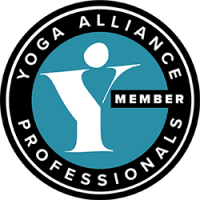Online anatomy workshop Yoga and Pilates in amateur and professional sports
This course is open to sports coaches, pilates teachers, yoga instructors, physiotherpists, chiropractors, osteopaths, sports massage, dance teachers, exercise to music and fitness/games teachers, sports massage and all movement practitioners including holistic.
Playing sport and doing regular exercise is good for your health, but can sometimes result in injuries. “Each year 1-1.5 million people attend an A&E department in Britain due to a sporting injury” (Nicholl et al 1991 cited in Boyce and Quigley 2004)”.
 A substantial number of amateur sports athletes believe that the only treatment pathway available for them to get pain relief and advice is to attend A&E (Grimble et al, 1993) leading to approximately 5,600 a day Accident and Emergency (A&E) department attendances within the UK for sports-related injuries (Cook et al, 2003). According to Falvey et al (2009), this accounts for the majority of the workload of an A&E department, with the highest number of attendances being on Monday as a result of weekend sports fixtures. There is a bigger demand than ever for movement and manual therapist to treat sports injuries in classes, at sports clubs and one to ones. Whilst prevention of injury is certainly desirable, the reality that athletes will be injured is part of sport participation. Thus, the sport rehabilitator or movement practitioner must always be prepared to administer the care for which they are trained. The aim of this unit is to provide learners with an overview of injury prevention and prehabilitation using Yoga/Pilates and functional movement.
A substantial number of amateur sports athletes believe that the only treatment pathway available for them to get pain relief and advice is to attend A&E (Grimble et al, 1993) leading to approximately 5,600 a day Accident and Emergency (A&E) department attendances within the UK for sports-related injuries (Cook et al, 2003). According to Falvey et al (2009), this accounts for the majority of the workload of an A&E department, with the highest number of attendances being on Monday as a result of weekend sports fixtures. There is a bigger demand than ever for movement and manual therapist to treat sports injuries in classes, at sports clubs and one to ones. Whilst prevention of injury is certainly desirable, the reality that athletes will be injured is part of sport participation. Thus, the sport rehabilitator or movement practitioner must always be prepared to administer the care for which they are trained. The aim of this unit is to provide learners with an overview of injury prevention and prehabilitation using Yoga/Pilates and functional movement.
Sports injuries can be caused by:
Almost any part of the body can be injured, including the muscles, bones, joints and connective tissues (tendons and ligaments). The ankles and knees are some of the most commonly affected areas.
Some of the sports that we will cover are:

What they said :
“I found the course to be excellent. I really enjoyed the fact that i was challenged and was forced out of my comfort zone.”
“Really enjoyed the course, manual is clear. Nice working in small group”.
“Thoughtful, informative, practical aspects help application of theory”.
“Excellent course, was great with small numbers and we got more time for discussion. I learnt many new skills techniques.”
“I’ve loved every minute and will definitely use what I’ve been taught”.
“Very applicable on a practical level, transferable across different disciplines and sports. Lots of props great theory and content. I can start using the knowledge straight away. The tutor has amazing knowledge”.
“Excellent course, most useful was working with real sports people. Great to be given a manual for further reading and research. Excellent tips throughout the day with very helpful practical advice”.
“I have gained so much knowledge today, the course has really pushed my boundaries and I feel confident in my knowledge and new exercises that I have learnt.”
“This was an exceptional learning experience, second to none, I will definitely return to building my knowledge”.
